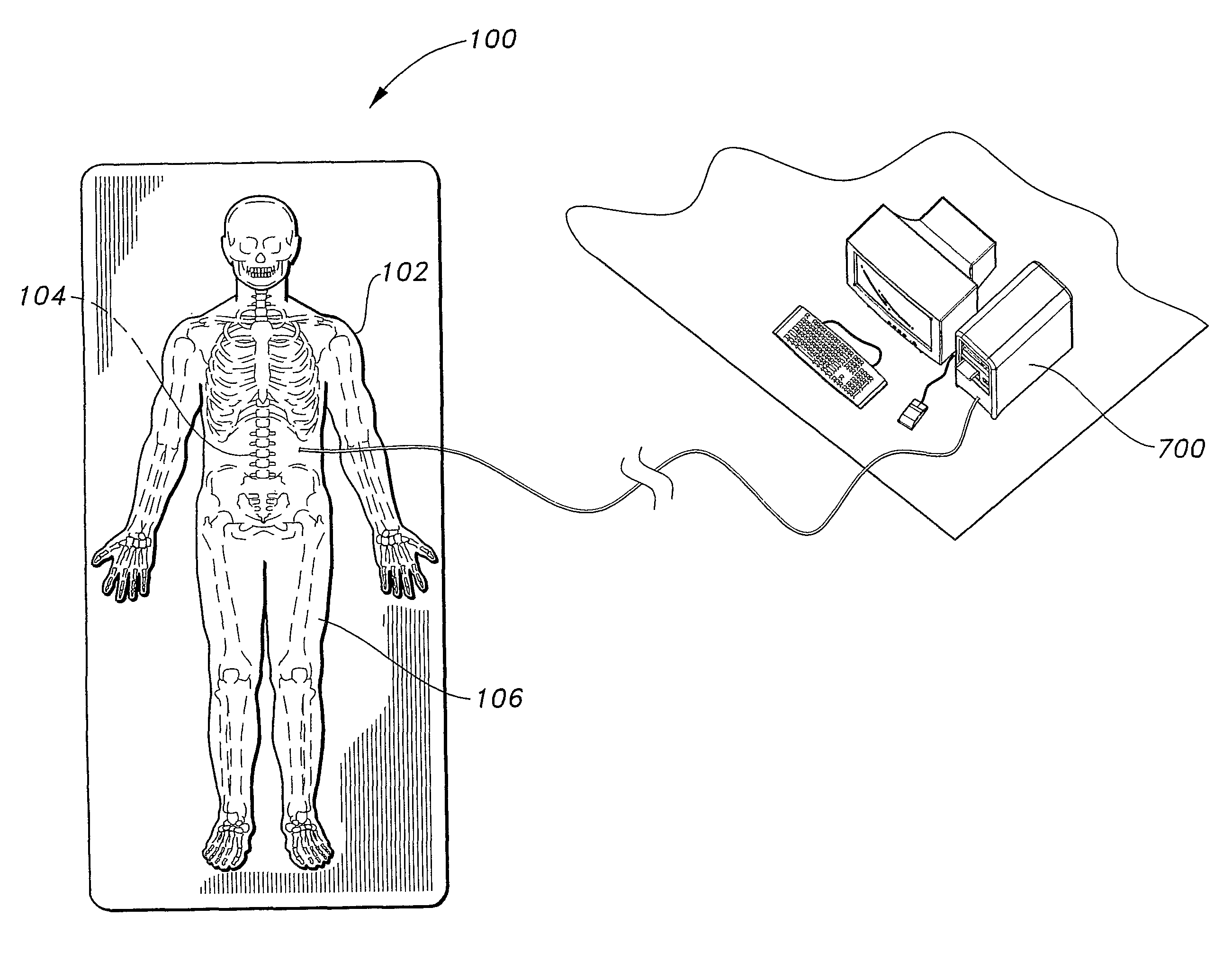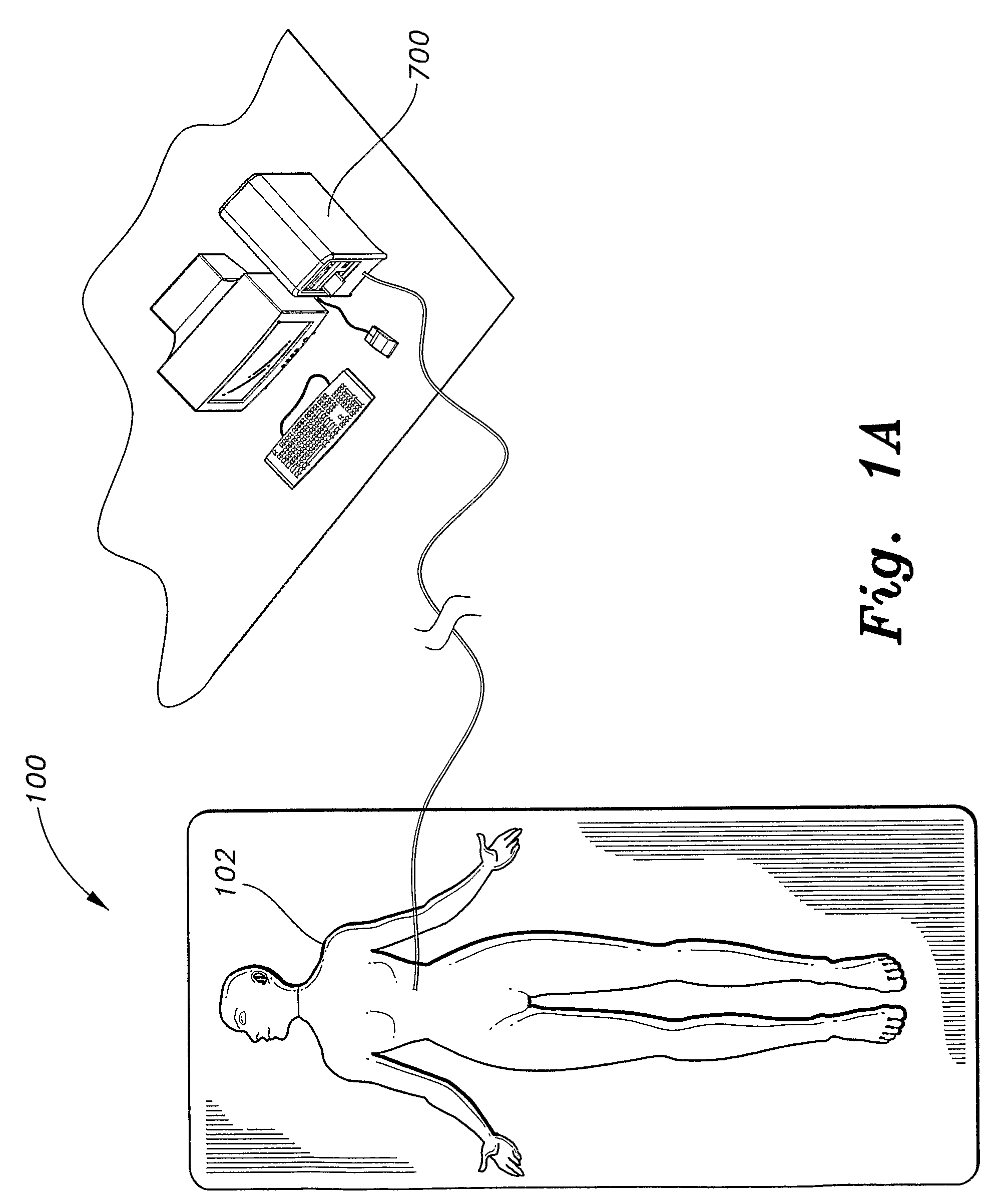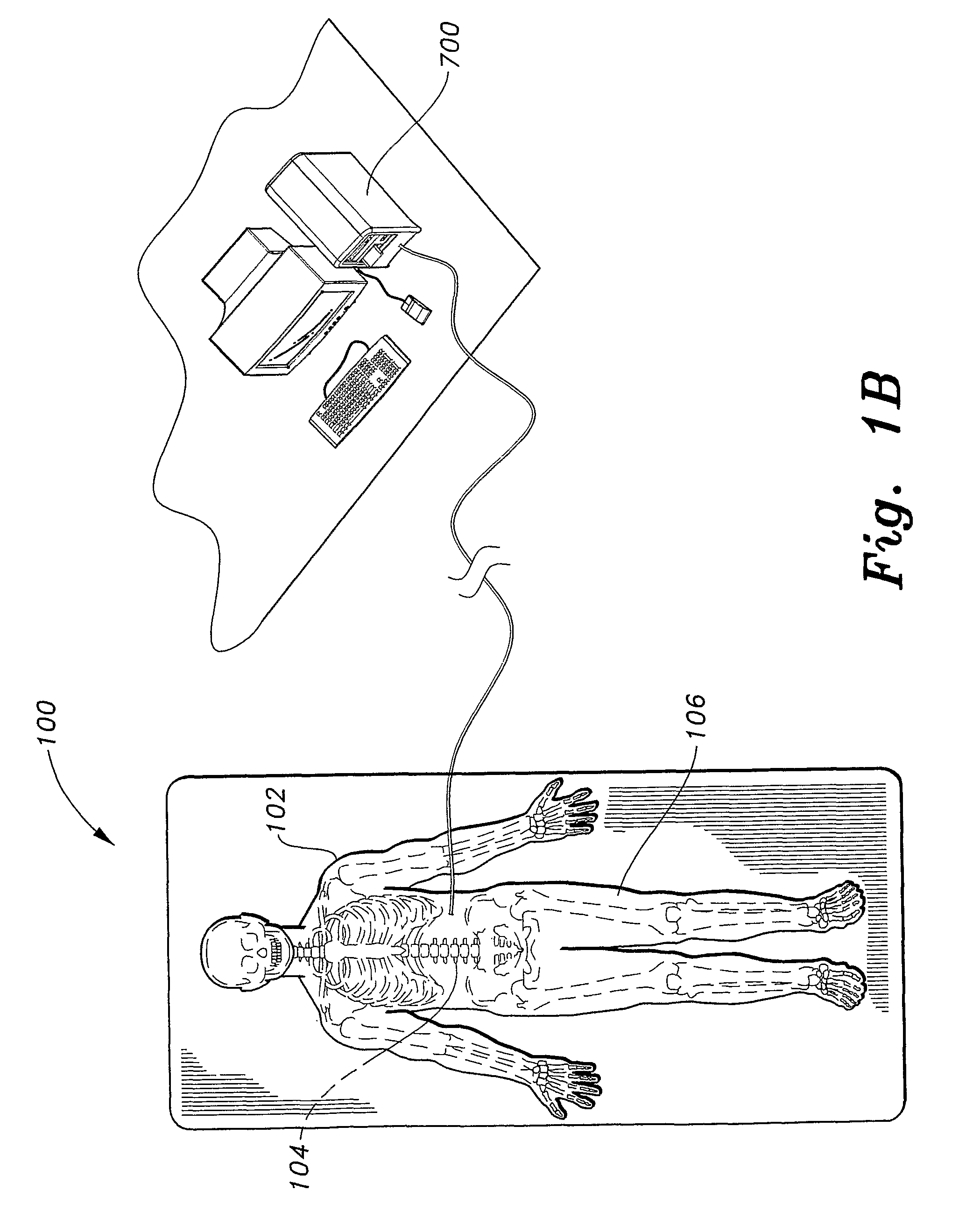Orthopedic procedures training simulator
a training simulator and orthopaedic technology, applied in the field of orthopaedic procedures training simulators, can solve the problems of only limited experience in performing orthopaedic procedures on actual patients, difficult to learn orthopaedic procedures for medical students, and further injury to patients
- Summary
- Abstract
- Description
- Claims
- Application Information
AI Technical Summary
Benefits of technology
Problems solved by technology
Method used
Image
Examples
Embodiment Construction
[0034]The present invention is an orthopedic procedures training simulator, designated generally as 100 in the figures. Referring to FIGS. 1A-1C, the orthopedic procedures training simulator 100 is a figure or mannequin 102 generally, in the illustrated embodiment, in the form of a human body having an internal skeletal structure 104 adapted for simulating various orthopedic noxious events including joint dislocations and bone fractures.
[0035]The internal skeletal structure 104 is comprised of numerous skeletal members arranged generally in the form of a human skeleton. A covering 106 of foam or similar material surrounds the internal skeletal structure 104 to give the mannequin 102 a somewhat realistic appearance of a human body.
[0036]The internal skeletal structure 104 is instrumented by stress and torque sensors, position sensors, and electrical contacts located on and near various skeletal members of the internal skeletal structure 104. A computer system 700 is in communication ...
PUM
 Login to View More
Login to View More Abstract
Description
Claims
Application Information
 Login to View More
Login to View More - R&D
- Intellectual Property
- Life Sciences
- Materials
- Tech Scout
- Unparalleled Data Quality
- Higher Quality Content
- 60% Fewer Hallucinations
Browse by: Latest US Patents, China's latest patents, Technical Efficacy Thesaurus, Application Domain, Technology Topic, Popular Technical Reports.
© 2025 PatSnap. All rights reserved.Legal|Privacy policy|Modern Slavery Act Transparency Statement|Sitemap|About US| Contact US: help@patsnap.com



